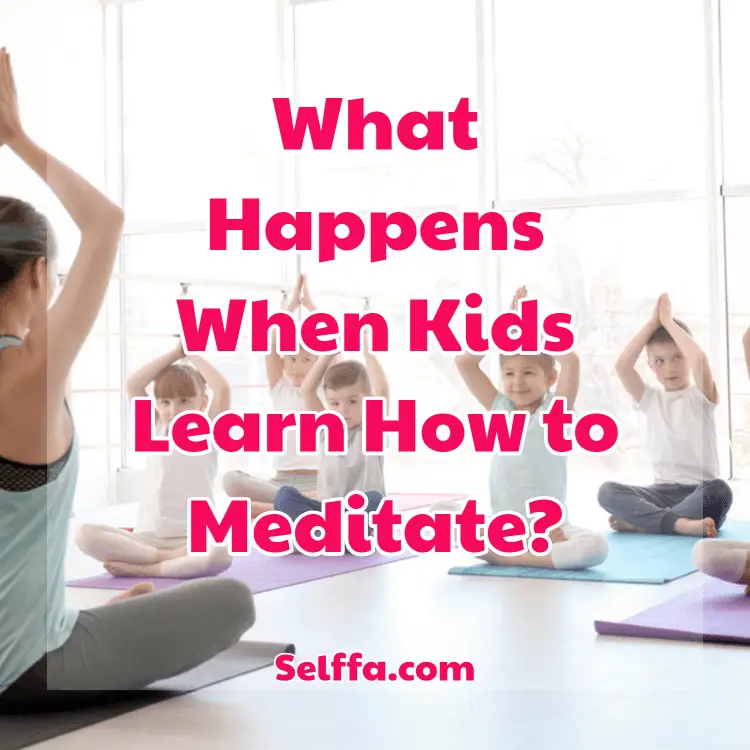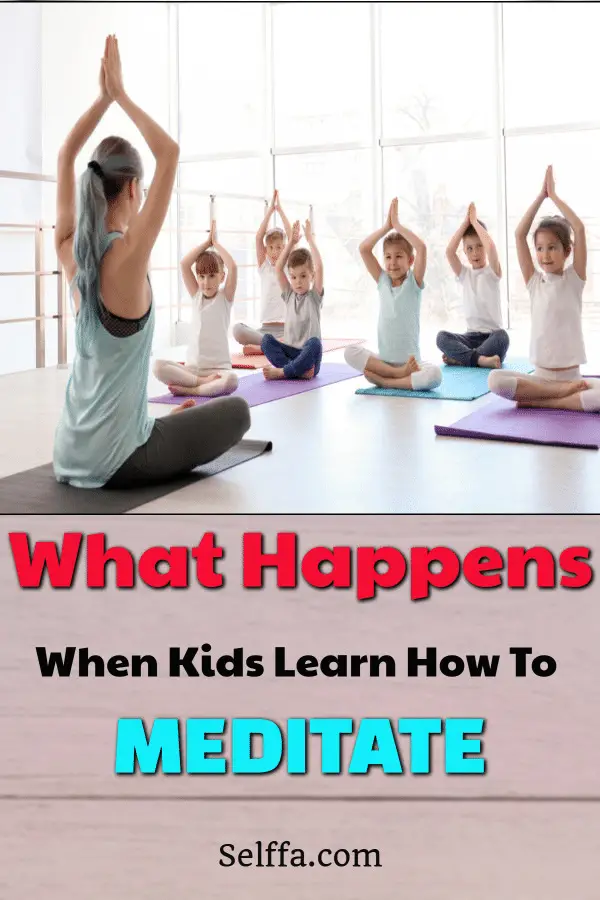Meditation for Kids: Benefits & Techniques for the Modern Child
The benefits of regular meditation for adults have been well-established in scientific research: stress relief, mental focus, life balance, and overall contentment.
But what about children?
In today’s fast-paced world, kids’ lives can be just as hectic as their parents’ lives, and habits tend to have more “sticking power” when they’re picked up at an early age.
Can kids be taught to meditate, and if so, what do little ones stand to gain from this mindful practice?
Should Children Meditate?
Susan Kaiser Greenland, author of The Mindful Child, wrote,
“Mindfulness is a refined process of attention that allows children to see the world through a lens of attention, balance and compassion.
“When children learn to look at the world with attention, balance and compassion they soon learn to be in the world with attention, balance and compassion.”
There are many different views on how to raise children, and meditation is just one component of this large, complex puzzle.
Not only can meditation bring about immediate behavioral changes in children, but it can also teach them how to make difficult life decisions and feel connected to the world around them.
Meditation doesn’t come with any risk, so there’s really no reason not to try it out with your kids. So yes, kids should learn how to meditate.
It literally creates sharper thinking, kinder human beings.
What are the Potential Benefits?
Unlike many research topics, studies of childhood meditation have revealed numerous benefits and no negative effects. These are some of the most promising and well-established benefits of meditating during childhood:
- Stress relief
- Restlessness relief
- Mental focus
- Discover life balance
- Deepen social skills
- Develop math skills
- Better sleep
- More self-esteem
- Emotion control
- Improved decision-making skills
Research on Childhood Meditation
Did you know that more than two million children in the U.S. were diagnosed with attention-deficit/hyperactivity disorder (ADHD) between 2003 and 2012?
Although most children with ADHD are diagnosed with the condition by age six, severe cases are often diagnosed by age four. Over half of these kids are taking prescription ADHD medication and will remain on medication throughout their teen years.
Since meditation has shown to help adults concentrate and focus in their daily lives, researchers have begun to study the effects of meditation on kids too.
The National Therapies Research Unit at the Royal Hospital for Women in Australia conducted a study of 26 children with ADHD between the ages of four and 12 who were treated with Sahaja Yoga Meditation for six weeks.
These were the main findings of the study:
- Reduced hyperactivity
- Reduced impulsiveness and inattention
- Improved parent-child relationships
- Enhanced self-esteem
- Reduced use of medication in 50 percent of children
Stress can begin to impact children at a very young age, and stressful situations affect health and well-being almost immediately.
In a study at the University of Florida, researchers surveyed nearly 96,000 U.S. children to collect data about their health following situations of parental divorce, domestic and neighborhood violence, poverty, and exposure to drug abuse.
Like adults, meditation can help children cope with stresses and traumas by being mindful about present situations and thinking clearly and rationally about them.
According to research conducted at UCLA by Greg Flaxman and Lisa Flook, Ph.D., mindful meditation can strengthen parent-child relationships and have mutually-beneficial results in many types of families.
Parents of children with autism developmental disabilities report more satisfaction and less stress with mindfulness practice. Meanwhile, their children were happier and listened better after mindfulness training.
Aside from the emotional and behavioral benefits, recent research suggests that meditation can actually boost academic performance in children as well. A study published in Developmental Psychology found that 4th and 5th grade students who regularly performed meditation exercises did 15 percent better on math tests.
Meanwhile, the meditation program students showed 24% better social behaviors, were 24% less aggressive, and perceived themselves as 20% more pro-social. Researchers analyzed the British Columbia students for four months and were astonished at the positive results.
“Doing these kinds of programs in school does not take away from academics,” said co-author and developmental psychologist Kimberly A. Schonert-Reichl. “It adds to a growing research literature that’s showing, actually, these kinds of programs and practices increase academic gains.
By adding this on, you not only create more academically capable, successful students, but actually create more caring, less stressed, kind students.”
Does Meditation Help in School?
Since meditation is known to help kids focus their energies and reduce tensions, overwhelming evidence suggests that it can help them perform better in school. In fact, meditation can have a profound impact on not only academics, but also athletic, creative and social performance.
When meditation is incorporated into the learning process, kids can find perspective, embrace simplicity, and be more compassionate. Schools all across America have begun adding meditation to their curriculum with very positive results.
New Haven Academy in Connecticut made headlines by requiring incoming freshman to take yoga and meditation classes three times a week, and several San Francisco schools in rough neighborhoods have found success with in-school meditation programs too.
Students in these programs have showed unprecedented progress in stress management, class attendance, and test proficiency. Several other studies published in well-established journals have mirrored these results and also revealed less hyperactive behavior, improved mood, and fewer depression symptoms. The Atlantic recently published a great article about how schools can teach kids to meditate that’s worth reading.
How Young Can Kids Start?
This is a great question, and one that yields different answers from parents and child experts. The Dali Lama once said, “If every 8 year-old in the world is taught meditation, we will eliminate violence from the world within one generation.” However, every child matures at a different rate and can be ready to meditate at a different age.
Many parents, including Bess O’Connor, a healing arts practitioner and Ayurvedic massage therapist at the Chopra Center, have taught children as young as three how to meditate. Some experts have recommended starting with one minute of meditation per day, per year of age. However, young children diagnosed with ADHD may benefit from starting earlier than their peers.
A study published in the Journal of Applied School Psychology showed that 1st through 3rd graders who enrolled in a 12-week breath awareness and yoga program saw improvements in their attention spans, social skills, and reduced test anxiety.
Other studies have suggested that preschool and elementary school are ideal times to begin meditation training as well. UCLA’s Mindful Awareness Research Center conducted studies of preschool and elementary school students who took an 8-week mindful training program with two 30-minute sessions per week.
These studies showed strong improvements in the students’ self-regulatory abilities, making a good case for these types of practical programs in the classroom.
Meditation Techniques for Kids
The way that kids approach meditation often differs from the way adults approach it, and that’s perfectly fine. Kids learn by watching and observing, so all eyes will be on you to set a good example of how to incorporate meditation into daily life.
Start by designating a special place in your home for meditative practice that’s comfortable and free of distractions. Consider lighting a candle or stick of incense, and maybe putting on some soft music to get your kids into a different mindset.
Children often learn well with games, so you can start by playing a game of who can be the quietest. Explain to your children how beautiful silence can be and how being quiet time can help us reflect on how we are truly thinking and feeling.
Schedule silent time into your children’s daily routine to help them get comfortable being still and embrace silence. Start with just 10 minutes per day and increase gradually from there.
Deep breathing techniques are also great for kids because they’re easy to understand and can be done essentially anywhere. The breath is connected to every part of the body, so breathing can bring physical calming when nothing else can.
These are a couple fun breathing exercises to try with your kids:
- Alternate Nostril Breathing: Hold one nostril closed and breathe out through the other nostril. Switch sides and repeat for at least five minutes.
- Belly Breathing:Inhale deeply through the nose while drawing the belly in. Then exhale slowly through the mouth and expand the belly out. Extend each inhale and exhale for at least five counts and repeat.
Making Meditation Fun
As adults, many of us view meditation as an entirely serious endeavor – an obligation to carry out with a straight face and a strict focus. However, kids should be allowed to be kids and have fun, whether in work, play, or meditation.
Visualization is one of the most powerful forms of meditation, and many kids are visual learners. Yoga Nidra is a great way to get in tune with individual part of your body and truly observe all aspects of your mind and body. As you mindfully scan your body from head to toe, allow thoughts and feelings to arise and then simply let them go and move on to the next body part.
Visualizations can be as simple as having your child imagine himself lying on a beach next while watching the ocean waves or walking in a field of wildflowers on a spring day.
Chanting and repeating mantras can also be fun ways to get kids engaged in meditation. Chanting is much like singing and can help you bond with your kids during meditation sessions. You can start with a simple “OM” to get started, and maybe work up to the Gayatri Mantra, which is a historic and soothing chant that doubles as a fun memory exercise.
Kids love to be on-the-go, so if your child is struggling to sit still, try a walking or standing meditation. Challenge your little one to balance a book on his head and slowly walk across the room and back without it falling. Tree pose is a yoga balance pose that’s great for bringing focus to the mind through challenging physical activity.
Resources for Kid-Friendly Meditation
So yes, kids can learn to meditate and they should as often as possible! Here are some helpful resources about kid-friendly meditation for further reading.
- Meditate by Eight (how to teach meditation to kids by Mindful Muscle)
- Lorraine Murray’s book, Calm Kids
- Susan Kaiser Greenland’s book, The Mindful Child
- Annaka Harris’s Guided Meditations for Kids
- Sleep Meditations for Kids by Christiane Kerr: Calming Bedtime Relaxation Stories
- MeditationInSchools.org
- Relax Kids’ Resource Library



